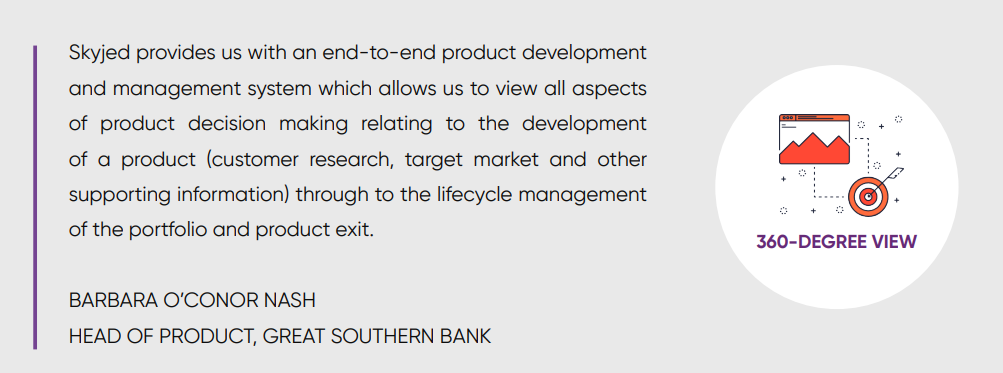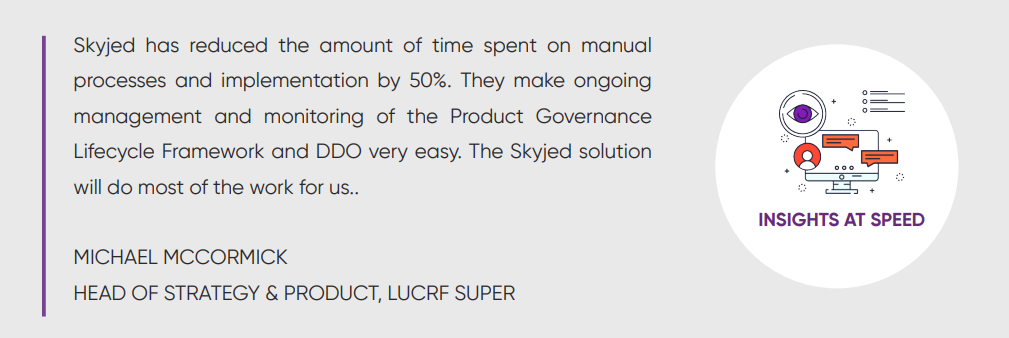How to improve pricing practices in your product framework
by Helen Tsaganos

Pricing practices are essential for organisations because they help determine the right price for their products or service fairly, with transparency and value at the core.
A well-designed pricing strategy and practise can have a significant impact on revenue, profitability, competitive advantage, customer perception, reputation and overall success.
ASIC is urging industry to improve pricing practices with particular attention to the insurance industry. Recently ASIC commenced civil penalty proceedings in the Federal Court for misleading customers with respect to product disclosure statements about pricing discounts available.
Pricing discounts is a common part of a product’s value proposition and is therefore extremely important to get it right!
Not only to get it right for your customers, and their satisfaction and product trust of your organisation but also for ensuring you are meeting your legal and regulatory obligations as organisations can face big fines and reputational damage.
It’s absolutely vital to ensure it has the right focus and attention and is done right!
When statements are made about discounts that are available and will be applied to certain products and services it’s critical to ensure the communication is clear and understood by your customers on the conditions it does and does not apply to.
It should not be based on certain other provisional conditions that are may not be clearly communicated or understood as part of the offer.
Organisations failing on pricing promises is a key priority for ASIC and the insurance industry in general. However whilst the current emphasis is on systemic issues in insurance, the practise is relevant and applicable to all industries.
In October, 2021 ASIC called on all general insurers to review their pricing practises and applicable systems and controls as a matter of priority to ensure customers were receiving the full discounts they were promised. Since 2018, there have been industry-wide failures that has led to more than $400 million in remediation being paid to over 2 million insurance customers.
ASIC continues to regularly monitor marketing and pricing practices and has the power to take enforcement action against any financial services provider that engages in misleading or deceptive pricing practices, as well as take action against any financial services provider that breaches its regulatory requirements.
To improve your pricing practices here are our top 10 tips for all product frameworks:
Developing good pricing practices is an essential aspect of product lifecycle management. Good pricing practices involve setting prices that are competitive, provide value to your customers and users, are profitable and sustainable.
- Conduct Market Research / Customer Validation: Conduct research to understand the current market conditions, customer preferences, and competitive pricing strategies. This will help to ensure that your pricing is competitive and reflective of the value of your product or service.
- Analyse and Understand your Costs: Understand your costs, including direct costs (such as raw materials and labour) and indirect costs (such as overheads and marketing expenses). It is important to ensure that your pricing covers your costs and allows for a reasonable profit margin.
- Determine Your Value Proposition: Determine the unique value proposition that your product or service offers to customers. This may include factors such as quality, convenience, or customer service. Your pricing should reflect the value that your product or service provides to customers.
- Monitor your competition: Keeping an eye on your competitors' pricing practices can help you remain competitive and ensure that your prices are in line with industry standards.
- Use data analytics: Data analytics can help you analyse customer behaviour and identify pricing trends. By using data analytics, you can identify patterns and adjust your pricing strategy accordingly.
- Develop a Pricing Strategy: Develop a pricing strategy that is aligned with your business goals and objectives. This may include pricing to penetrate the market, pricing to maintain profitability, or pricing to achieve a premium position in the market.
- Offer pricing incentives: Offering discounts, promotions, or bundles can attract new customers and retain existing ones. Incentives can also help you boost sales during slower periods however all conditions must be clear to understand by your customers with no hidden surprizes. This must also be validated and tested.
- Test different pricing models: Experimenting with different pricing models can help you determine which one works best for your business. For example, subscription-based pricing or pay-per-use pricing can be more effective for some products or services.
- Test and Refine: Test your final pricing strategy and regularly review your pricing practices to ensure that they are effective and sustainable over the long term. This may involve adjusting your pricing based on customer feedback, market conditions, or changes in your cost structure.
- Communicate Clearly: Communicate your pricing practices clearly and transparently to customers. This includes providing clear information on pricing, fees, and charges, and ensuring that customers understand the pricing, the discounts if applicable and the value that they are receiving for their money.
By following these steps, organisations can develop good pricing practices that are aligned with their goals, objectives, and customer needs. This will help to build customer loyalty, product trust, increase profitability, and ensure long-term success.
Some of the general pricing practices that ASIC regularly monitors include:
- Ensure that pricing practices are transparent, fair, and reasonable and regularly monitored how they are communicated and implemented in your systems and billed to customers.
- Disclosure of fees and charges: Financial services providers must clearly disclose all fees and charges associated with their products and services in a manner that is easy for consumers to understand. (Our suggestion is to never assume your customers will always understand your pricing language – test and test to learn if they do and make adjustments and retest until its clear and understood!)
- Comparability of pricing: Financial services providers must provide pricing information that allows consumers to compare products and services in a meaningful way. This includes the use of standardised fees and charges across the industry.
- Fair pricing: Financial services providers must price their products and services in a fair and reasonable manner that reflects the value of the service being provided.
- Prohibition of unfair contract terms: Financial services providers cannot include unfair contract terms in their agreements with consumers, including terms that allow for unexpected fees and charges.
ASIC pricing practises – Insurance providers
ASIC has established regulatory frameworks that govern the pricing practices of insurance providers in Australia.
Here are some of the key pricing practices that ASIC monitors:
- Fair and Reasonable Pricing: Insurance providers must set premiums that are fair and reasonable, and reflect the risks associated with providing insurance coverage. Premiums should not be excessive and should reflect the value of the coverage provided.
- Non-Discriminatory Pricing: Insurance providers must ensure that their pricing practices are non-discriminatory, and do not unfairly disadvantage certain groups of customers. This includes ensuring that premiums are not based on factors such as age, gender, or race.
- Clear and Transparent Pricing: Insurance providers must provide clear and transparent information about their pricing practices, including the factors used to determine premiums and any fees or charges associated with the policy. This information must be easily accessible to customers and provided in a way that is easy to understand.
- Fair Claims Handling: Insurance providers must handle claims in a fair and transparent manner, and ensure that customers are not unfairly denied coverage or subject to unreasonable delays in the claims process. This includes providing clear information about the claims process and any requirements for making a claim.
- Regular Review of Pricing Practices: Insurance providers must regularly review their pricing practices to ensure that they are aligned with regulatory requirements and customer needs. This may involve adjusting premiums based on changes in risk factors or changes in market conditions.
About Skyjed
Skyjed is an AI-powered digital product lifecycle management and governance SaaS platform that acts as the single source of truth for product design, health, performance, and governance.
Skyjed is an ISO-27001 accredited solution. It is designed to drive growth and enable product teams to strategically design and monitor products with automation smarts and faster insights to make data-driven decisions with confidence.
Skyjed’s commitment to innovation and our customers has been rewarded with several industry recognitions including Technology of Year – Finalist in the UK Tech & Innovation Awards 2022, Finalist in the AFR Most Innovative Company 2022 and AFR Sustainability Awards 2022 and Regtech Female Founder of the Year 2021.
Experience the unique features of Skyjed:
- AI-powered modern product lifecycle management and governance solution
- Flexible to achieve different business goals
- Pre-built design, monitoring, and review templates or easily build your own
- Automated workflow triggers so you can identify opportunities as they emerge or monitor risks before they take hold
- Access boardroom-ready product governance and product insight reports and dashboards
- Team collaboration with review and approval workflows, actions & comments management, version control, and record keeping
- Integrated workspace with product planning and scheduler capability
Here's what some of our financial customers are saying about Skyjed





